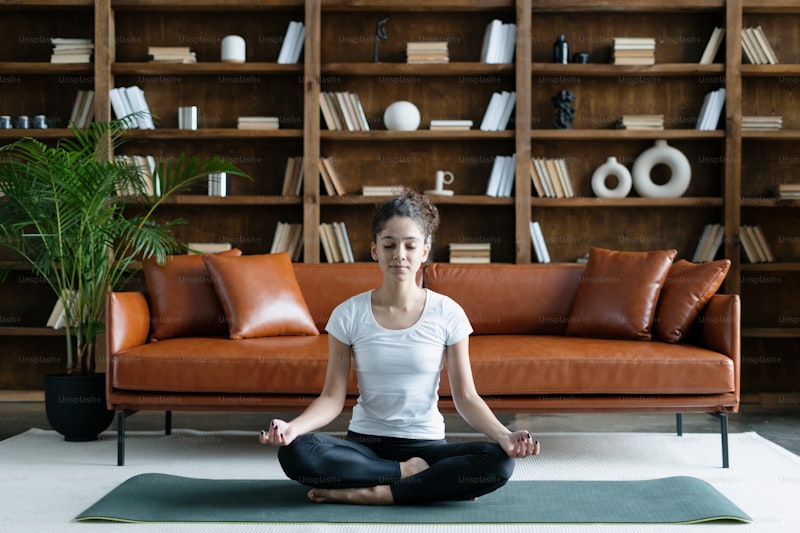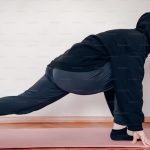When I started my yoga journey, even the simplest balance seemed impossible. But over the years, I have found that Pattabhi Jois was definitely right – I practiced and it came! I took baby steps – sometimes it felt like I would never achieve a particular pose and then suddenly I was there. I still have lots of balances to master, but here are a few things I have learned on my journey…
Foundations really matter
Whatever the balance, your foundation must be firm and active. Create space between your fingers and toes by spreading them as wide as you comfortably can. In standing, plug your toe tips into the mat as you ground through your heels. Press your head firmly into your hands and your forearms into the mat in headstands. Next, ground down through the whole of your foundation as you lift up through the whole of your body. Lengthen the spine and grow tall through the crown of your head – this really works whether you are upright, horizontal or upside down!
There is an extra challenge in standing balances. The temptation is to lock the standing knee out straight as you grow tall but the opposite actually works better. Keep a ‘microbend’ in that knee and you’ll feel much more stable. Some teachers describe this as a ‘soft knee’.
Core is key
The stronger your core, the easier you will find balances. You can build your core strength through the simplest of exercises. Even during sun salutes, the transitions through chaturanga, up-dog and down-dog work the core beautifully (when done mindfully). Alternatively, practicing planks and side planks, even the modified versions, will result in better balances.
Don’t forget bandhas
There is so much to think about in balances and it is easy to forget bandhas. Learning to engage mula and uddiyana bandhas was a game changer for me. My stability skyrocketed – try it and I think you’ll see what I mean!
A vision of success
Many top athletes use visualisation to improve their performance. They simply imagine themselves winning a race; kicking a try or hitting a target. Research shows that imagining success brings success and it works in yoga too. Before you start a balance, spend a few moments setting up the pose in your mind’s eye. Imagine you are effortlessly able to maintain the pose for as long as you want to. Then, with the picture of your success clear in your head, do it for real.
Not only does visualisation build confidence and success in a pose but it enhances internal focus and supports mindful practice.
Keep that ego in check
We all want to balance like a yoga god or goddess, yesterday! But for most us mere mortals, that will never be the reality. Though it is tempting to push for that perfect balance, it is usually far better to do a modified version that you can achieve well and hold for a few steady breaths. Here are a few of my favourite variations:
- Keep your hands on your hips or in prayer position for Warrior 3
- Place your foot below the knee of the standing leg in tree pose; you can even have the toe rested on the floor to help with stability
- Use a belt to reach your lifted foot in dancer pose
- Try a block under your hand in half moon
- Use a wall or chair to support headstands
- Practice balances on hard floors rather than soft mats
- Do balances near a wall so you put out a steadying hand if you need it
These versions will help you build good, safe techniques and pave the way to the next level.
Balance for older yogis
With more people taking up yoga later in life, balances can present a real risk. Older people may have osteoporosis which means they break bones very easily. Older yogis can also find it harder to recover from a wobble because reaction times slow with age. This means that a wobble can easily become a fall with the risk of broken bones. This doesn’t mean balances should be avoided in later life. Practicing balancing actually improves the ability to recover from a wobble and can help to prevent falls in everyday life. So, how can older people do yoga balances safely to gain all the benefits without the risk?
- Hold on – keep one hand on a chair or wall
- 2 footed tree – keep both feet on the floor and use the hand position only. Start with your feet hips width apart and bring them closer together if balance improves
- Toe standing – start in mountain pose then lift your heels and stand on your toes. Again, the wider apart your feet are, the easier this is
- Chair warrior – hold the back of a chair in both hands for warrior 3. Lift one leg backward and bend forwards using the chair for support
- Upright eagle – eagle arms in standing, a bit like the tree version above
- Standing cow-face – same as for tree and eagle above
These modifications are also great if you are recovering from an injury or illness as part of your rehabilitation.
My journey to the perfect balance is by no means over. I still have so much to learn, but isn’t that one of the joys of yoga? The journey matters so much more than the destination. I may never be able to achieve a peacock or perfect dancer but am certainly enjoying every step I take in that direction. I hope you do too. Happy balancing!













